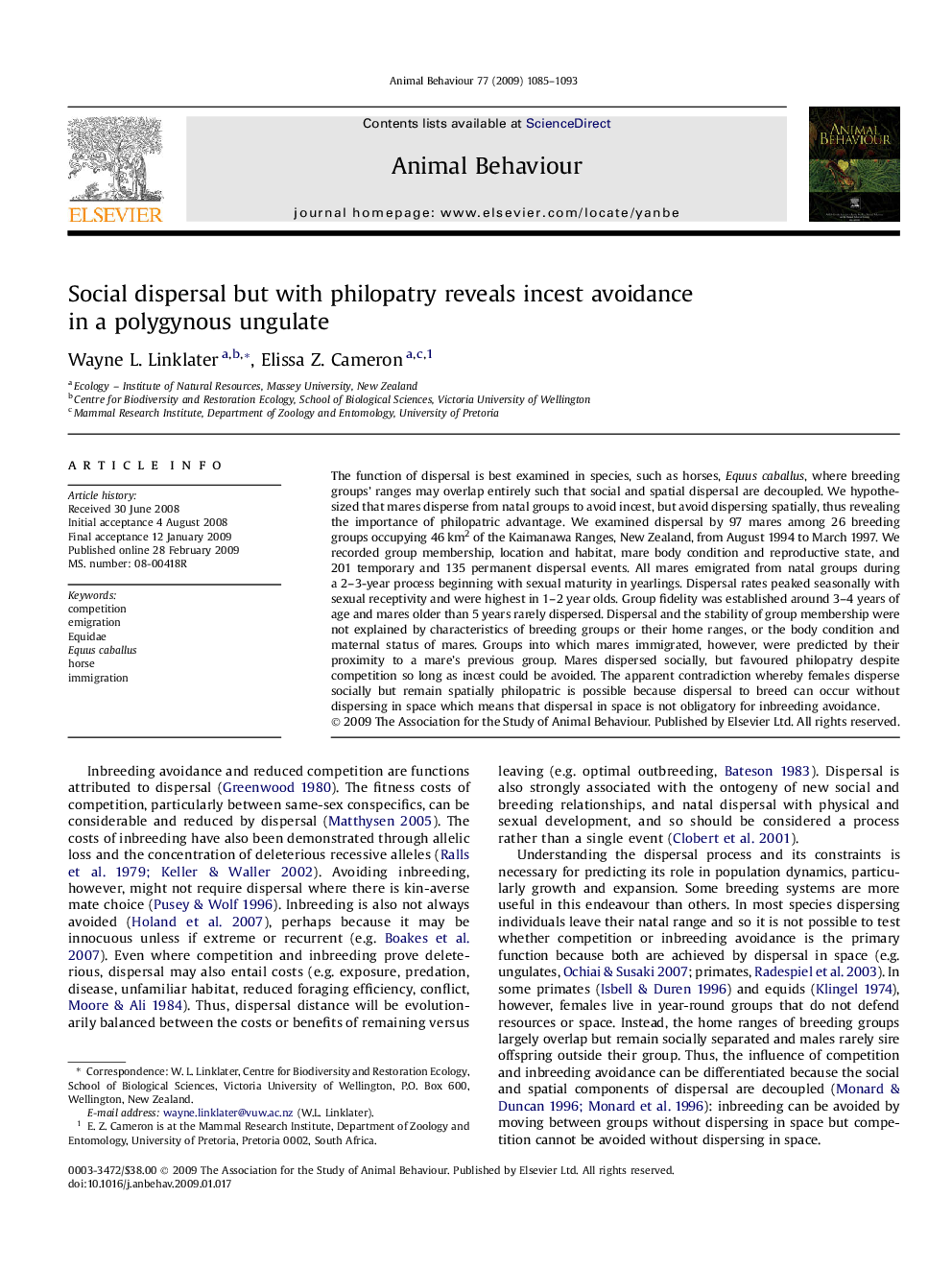| کد مقاله | کد نشریه | سال انتشار | مقاله انگلیسی | نسخه تمام متن |
|---|---|---|---|---|
| 2417622 | 1104324 | 2009 | 9 صفحه PDF | دانلود رایگان |

The function of dispersal is best examined in species, such as horses, Equus caballus, where breeding groups' ranges may overlap entirely such that social and spatial dispersal are decoupled. We hypothesized that mares disperse from natal groups to avoid incest, but avoid dispersing spatially, thus revealing the importance of philopatric advantage. We examined dispersal by 97 mares among 26 breeding groups occupying 46 km2 of the Kaimanawa Ranges, New Zealand, from August 1994 to March 1997. We recorded group membership, location and habitat, mare body condition and reproductive state, and 201 temporary and 135 permanent dispersal events. All mares emigrated from natal groups during a 2–3-year process beginning with sexual maturity in yearlings. Dispersal rates peaked seasonally with sexual receptivity and were highest in 1–2 year olds. Group fidelity was established around 3–4 years of age and mares older than 5 years rarely dispersed. Dispersal and the stability of group membership were not explained by characteristics of breeding groups or their home ranges, or the body condition and maternal status of mares. Groups into which mares immigrated, however, were predicted by their proximity to a mare's previous group. Mares dispersed socially, but favoured philopatry despite competition so long as incest could be avoided. The apparent contradiction whereby females disperse socially but remain spatially philopatric is possible because dispersal to breed can occur without dispersing in space which means that dispersal in space is not obligatory for inbreeding avoidance.
Journal: Animal Behaviour - Volume 77, Issue 5, May 2009, Pages 1085–1093